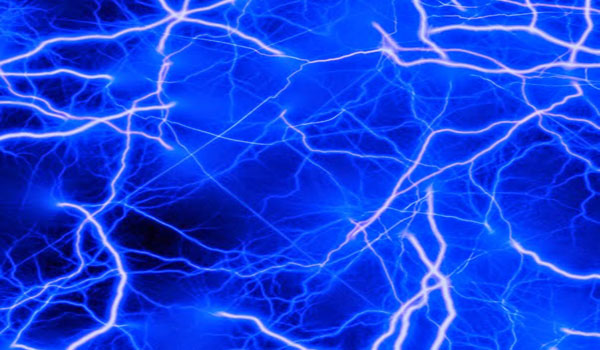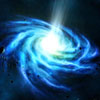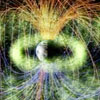The Electric Sky
There is a revolution just beginning in astronomy/cosmology that will rival the one set off by Copernicus and Galileo.
This revolution is based on the growing realization that the cosmos is highly electrical in nature. It is becoming clear that 99% of the universe is made up not of “invisible matter”, but rather, of matter in the plasma state.
Electrodynamic forces in electric plasmas are much stronger than the gravitational force.
Mainstream astrophysicists are continually “surprised” by new data sent back by space probes and orbiting telescopes. That ought to be a clue that something is wrong. New information always sends theoretical astrophysicists “back to the drawing board”. In light of this, it is curious that they have such “cock-sure” attitudes about the infallibility of their present models.
Those models seem to require major “patching up” every time a new space probe sends back data.
Astrophysicists and astronomers do not study experimental plasma dynamics in graduate school. They rarely take any courses in electrodynamic field theory, and thus they try to explain every new discovery via gravity, magnetism, and fluid dynamics which is all they understand. It is no wonder they cannot understand that 99% of all cosmic phenomena are due to plasma dynamics and not to gravity alone.
When confronted by observations that cast doubt on the validity of their theories, astrophysicists have circled their wagons and conjured up pseudo-scientific invisible entities such as neutron stars, weakly interacting massive particles, strange energy, and black holes.
When confronted by solid evidence such as Halton Arp’s photographs that contradict the Big Bang Theory, their response is to refuse him access to any major telescope in the U.S.
Instead of wasting time in a futile battle trying to convince entrenched mainstream astronomers to seriously investigate the Electric/Plasma Universe ideas, a growing band of plasma scientists and engineers are simply bypassing them.
A new electric plasma-based paradigm that does not find new discoveries to be “enigmatic and puzzling”, but rather to be predictable and consistent with an electrical point of view, is slowly but surely replacing the old paradigm wherein all electrical mechanisms are ignored.
Most of today’s accepted astronomy/cosmology is a set of deductively arrived at hypotheses precariously based on two false assumptions:
Electrical fields, currents, and plasma discharges are not important in space. Only gravitational and magnetic fields are important.
If the light from an object exhibits redshift, the object must be speeding away from us. And its distance from us is directly proportional to that speed.
Both of these assumptions are demonstrably wrong. They have been, and continue to be, contradicted by actual observations of the sky.
Those observations tell us that,
The universe is highly electrical in nature.
Redshift is more a measure of an object’s youth than its velocity.
The continued refusal of astrophysicists to re-examine their hypotheses in light of these new observations is the focus of “The Electric Sky”.
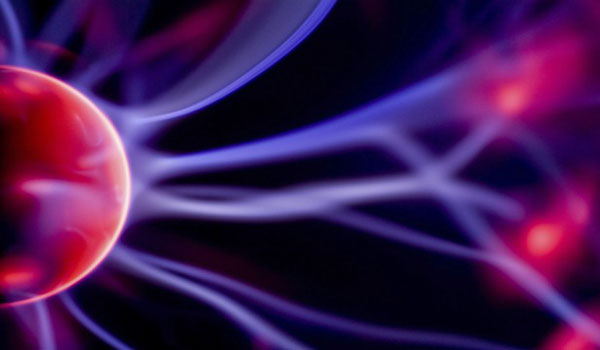 Plasma – The Fundamental State of Matter
Plasma – The Fundamental State of Matter
When one or more of the outer (valence) electrons are stripped away from an atom we say the atom has become ‘ionized’. It then exhibits a net positive electrical charge, and is called a ‘positive ion’. On the other hand, if an extra electron is added onto a neutral atom, the combination then carries a net negative charge and is referred to as a ‘negative ion’.
The electrical forces between dissimilar ions are orders of magnitude stronger than any mechanical force such as that produced by gravity. An electrical plasma is a cloud of ions and electrons that, under the excitation of applied electrical and magnetic fields, can sometimes light up and behave in some unusual ways.
The most familiar examples of electrical plasmas are the neon sign, lightning, and the electric arc welding machine. The ionosphere of Earth is an example of a plasma that does not emit visible light. Plasma permeates the space that contains our solar system. The cloud of particles that constitutes the solar ‘wind’ is a plasma. Our entire Milky Way galaxy consists mainly of plasma.
In fact 99% of the entire universe is plasma!
History
During the late 1800’s in Norway, physicist Kristian Birkeland explained that the reason we could see the auroras was that they were plasmas. Birkeland also discovered the twisted corkscrew shaped paths taken by electric currents when they exist in plasmas. Sometimes those twisted shapes are visible and sometimes not – it depends on the strength of the current density being carried by the plasma.
Today these streams of ions and electrons are called Birkeland Currents. The mysterious sprites, elves, and blue jets associated with electrical storms on Earth are examples of Birkeland currents in the plasma of our upper atmosphere.
In the early 20th century, Nobel laureat Irving Langmuir studied electric plasmas in his laboratory at General Electric; he further developed the body of knowledge Birkeland had initiated.
In fact it was he who first used the name ‘plasma’ to describe the almost lifelike, self-organizing behavior of these ionized gas clouds in the presence of electrical currents and magnetic fields.
Double Layers
One of the most important properties of any electrical plasma is its ability to “self-organize” – that is, to electrically isolate one section of itself from another.
The isolating wall is called a double layer (DL). When a plasma is studied in the lab, it is usually contained in a closed cylindrical glass tube. Electrodes are inserted into the ends of the tube – one electrode (called the anode) is maintained at a higher voltage than the electrode at the other end (the cathode).
If such a voltage difference is applied, then ionization will be initiated and current will start to flow through the plasma. Positive ions (atoms with one or more electrons stripped off) will migrate away from the anode, and negative ions (atoms carrying one or more extra electrons) will move toward the anode. The mathematical sum of these two oppositely directed flows constitutes the total current in the plasma.
If the voltage difference from one electrode to the other becomes large enough, a DL will form in a narrow cross-section somewhere in the middle of the tube. Almost all the voltage drop that is applied across the electrodes will fall across this DL. The plasma on one side of the DL (the side toward the anode) will have approximately the same voltage as the anode.
The plasma on the cathode side of the DL will have essentially the same voltage as the cathode. The two halves of the plasma are then electrically isolated from one another by the DL. No electrostatic force is felt by particles on one side of the DL due to charges on the other side of the DL. The total electric current, however, is the same throughout the plasma (on both sides of the DL).
Plasmas are excellent conductors and, therefore, there will not be a significant voltage drop across them while they are carrying current – thus the need for the presence of the DL that ‘takes’ most of any externally applied voltage. In other words, the DL is where the strongest electric fields in the plasma will be found.
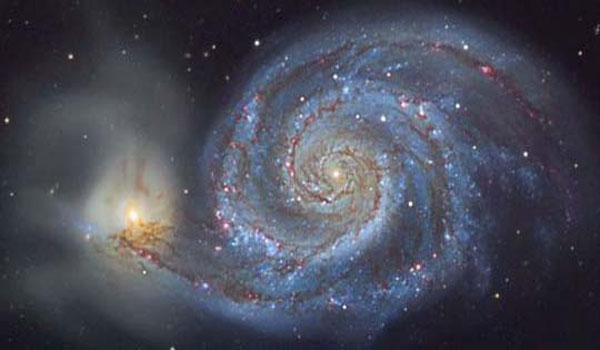 Currents in Cosmic Sized Plasmas
Currents in Cosmic Sized Plasmas
Because plasmas are good (but not perfect) conductors, they are equivalent to wires in their ability to carry electrical current. It is well known that if any conductor cuts through a magnetic field, a current will be caused to flow in that conductor. This is how electric generators and alternators work. Therefore, if there is any relative motion between a cosmic plasma, say in the arm of a galaxy, and a magnetic field in that same location, Birkeland currents will flow in the plasma. These currents will, in turn, produce their own magnetic fields.
Plasma phenomena are scalable. That is to say, their electrical and physical properties remain the same, independent of the size of the plasma. Of course dynamic phenomena take much less time to occur in a small laboratory plasma than they do in a plasma the size, say, of a galaxy. But the phenomena are identical in that they obey the same laws of physics. So we can make accurate models of cosmic sized plasmas in the lab – and generate effects exactly like those seen in space.
In fact, electric currents, flowing in plasmas, have been shown to produce most of the observed astronomical phenomena that are inexplicable if we assume that the only forces at work in the cosmos are magnetism and gravity.
Why Do Astrophysicists Ignore Electrical Phenomena?
When such a firm foundation has been laid for continued work in the electrical properties of the universe, why do “mainstream” astrophysicists continue to ignore this field of study and, instead, patch up their failing “gravity only” models with more and more arcane, invented theoretical fictions?
Why do conventional astronomers and cosmologists systematically exclude electric fields and currents from not only their consideration, but from their curricula?
Why do they intentionally ignore the fact that many here-to-fore “unexplained” phenomena are quite simply explained by recognizing the existence of electric fields and currents in solar and galactic plasma?
The answer is this:
Magnetism was known to exist in the middle ages. They knew, even back then, that a piece of iron could act on another – at a distance.
But, the early astronomers (like their modern brethern) were simply unaware of electrical phenomena. Johannes Kepler (1571-1630) had already mathematically explained the shape of the orbits of the planets when Isaac Newton published his treatise on gravity in 1687. Once that occurred, nothing more was needed to explain and predict the planetary motions that could be observed in those days.
Everything was solved.
This, of course, was all long before Benjamin Franklin (1706-1790) flew his kite in a thunder storm or James Clerk Maxwell (1831-1879) developed his equations relating magnetic and electric fields. But, electric fields were difficult to measure. And astronomers didn’t know they needed to know about them. So, they never got included in the “accepted” model of how the solar system or the cosmos works.
That is why, to this day, most astrophysicists have never taken courses in electromagnetic field theory or experimental plasma discharges. They attempt to describe the actions of plasma by means of equations that are applicable only to fluids like water – and magnetic effects. This is what Alfven called ‘magneto-hydrodynamics’. They do not realize, as he did, that the prefix ‘magneto’ implies ‘electro’.
And that, in turn, explains why astrophysicists blithely talk about stellar winds, vortex trails, and bow shocks instead of electrical currents in plasmas, electrical fields, z-pinches, and double layers.
It also explains why they make wrong claims about how magnetic fields must pile-up, merge, and recombine – they are simply uneducated in, and therefore understandably mystified by, this now well known area of engineering science.
The American Institute of Physics has just recently announced that they will now officially recognize the Plasma Universe as an official field of study in physics! Eighty years late!
But better late than never.
Conclusion
In 1986, Nobel laureate Hannes Alfven postulated both an electrical galactic model and an electric solar model. Recently physicist Wal Thornhill has pointed out that Alfven’s circuits are really scaled up versions of the familiar homopolar motor that serves as the watt-hour meter on each of our homes. The simple application of the Lorentz force equation (“crossing” the direction, v, of the current into the direction, B, of the magnetic field) yields a rotational force.
Not only does this effect explain the mysterious tangential velocities of the outer stars in galaxies, but also (in scaled down version) the observed fact that our Sun rotates faster at its equator than at higher (solar) latitudes.
Up to now astronomers and cosmologists have not given serious consideration to any sort of electrical explanation for the above observations. This is puzzling because all these electrical principles have now been known for decades. They have long been applied in the solution of problems in plasma laboratories here on Earth and have been used successfully in the invention of many practical devices – such as industrial electrical arc machining, particle accelerators, etc.
Posted in Science For The New Agewith comments disabled.

